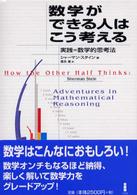Full Description
This book offers the first full-length, systematic account of international law as seen and applied from the perspective of Central Asia.
Since gaining independence from the Soviet Union in 1991, Kazakhstan, Kyrgyzstan, Tajikistan, Turkmenistan, and Uzbekistan have gradually emerged as active participants in the international legal order. Drawing on their evolving statehood and regional cooperation, this book explores how the Central Asian States engage with the rules, principles, and institutions of international law.
Across 15 chapters, the book covers key areas of international law - from the nature and sources of international law to the law of treaties, international responsibility, and peaceful settlement of disputes - as well as specialist regimes including international human rights, humanitarian and criminal law, international peace and security, and international trade law. Dedicated chapters address the status of the Caspian Sea, the role of international organisations and non-state actors, and the domestic implementation of international norms.
Through rigorous legal analysis and rich empirical references, the book also examines Central Asian constitutional and policy approaches to international law, regional mechanisms of dispute settlement, and case studies such as the legal status of the Caspian Sea, the Central Asian Nuclear-Weapon-Free Zone, and the development of institutional arbitration in the region, including the Astana International Financial Centre and the Tashkent International Arbitration Centre. The analysis highlights how the region's engagement with international law reflects both adaptation to global norms and the emergence of context-specific legal practices.
This is an essential resource for scholars, practitioners, and students of international law, comparative law, and Central Asian studies, as well as diplomats and policymakers.
Contents
Part I: Central Asia in the International System
1. A Critical Introduction to International Law
2. The Central Asian States as Sovereign Actors
3. International Organisations
4. Non-State Actors
Part II: International Law-Making Processes
5. International Law as a Source of Law in the Central Asian States
6. Law of Treaties
7. Other Sources of International Law
Part III: International Disputes and Responsibility
8. Peaceful Settlement of Disputes
9. Responsibility under International Law
Part IV: Current Challenges
10. International Peace and Security
11. International Trade Law
12. The Legal Status of the Caspian Sea
13. International Human Rights Law
14. International Humanitarian Law
15. International and Transnational Criminal Law








